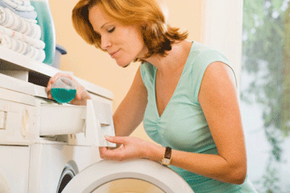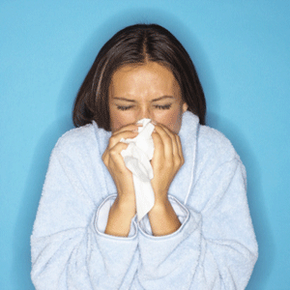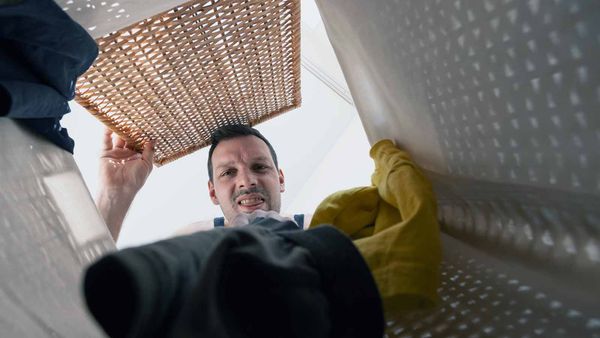Mildew is a nuisance -- it's smelly, offensive and a hazard to our health. It's produced by mold, fungi that grow in damp places, including dresser drawers, garment bags and the space behind your closet doors. Really, anywhere there's moisture, mildew can become an unwanted guest that will make itself at home. And unless you make a conscious effort to remove it, it'll definitely overstay its welcome. But is it possible to remove mildew's musty odor once it's embedded in your clothes? While it can be a tricky task, this fungi (and its lingering odor) can be defeated -- but not without investing a little time and elbow grease first.
Perhaps the easiest way to remove mildew stains is to use what's available in your own kitchen pantry -- namely table salt and a lemon. Combine lemon juice and salt to make a thick paste and rub it into mildewed-infested areas on clothing. Quickly dry affected garments in direct sunlight, then, if the stain is still there, do it all again. Repeat the process until the mildew is gone.
Advertisement
Water and vinegar is another simple way to rid clothing of mildew. Use equal parts white vinegar and water, and soak the solution on soiled areas to remove mild stains. For tougher stains, try full-strength vinegar instead.
Comprised of boron, sodium, oxygen and water, borax is an all-natural mineral that's sometimes used to fight mildew. Mix two liters of water with two cups of borax, and rub the solution into mildewed areas on clothing. Then saturate the garments in the solution until the stains are gone -- a process that may take several hours. Once stains are removed, thoroughly rinse the garments and dry immediately.
Bleach can also remove mildew stains, but be mindful to use it with caution -- if handled carelessly, bleach's harsh chemicals can ruin clothing. For washable fabrics, first rub a small amount of powdered detergent on mildew stains. If tags allow, wash clothing in hot water and add one half cup of chlorine bleach. When clothing labels don't permit the use of bleach and hot water, soak garments in a quarter cup of oxygen bleach -- labeled perborate or all-fabric -- in one gallon of warm water. Mildew stains should be gone after half an hour or so.
Advertisement







